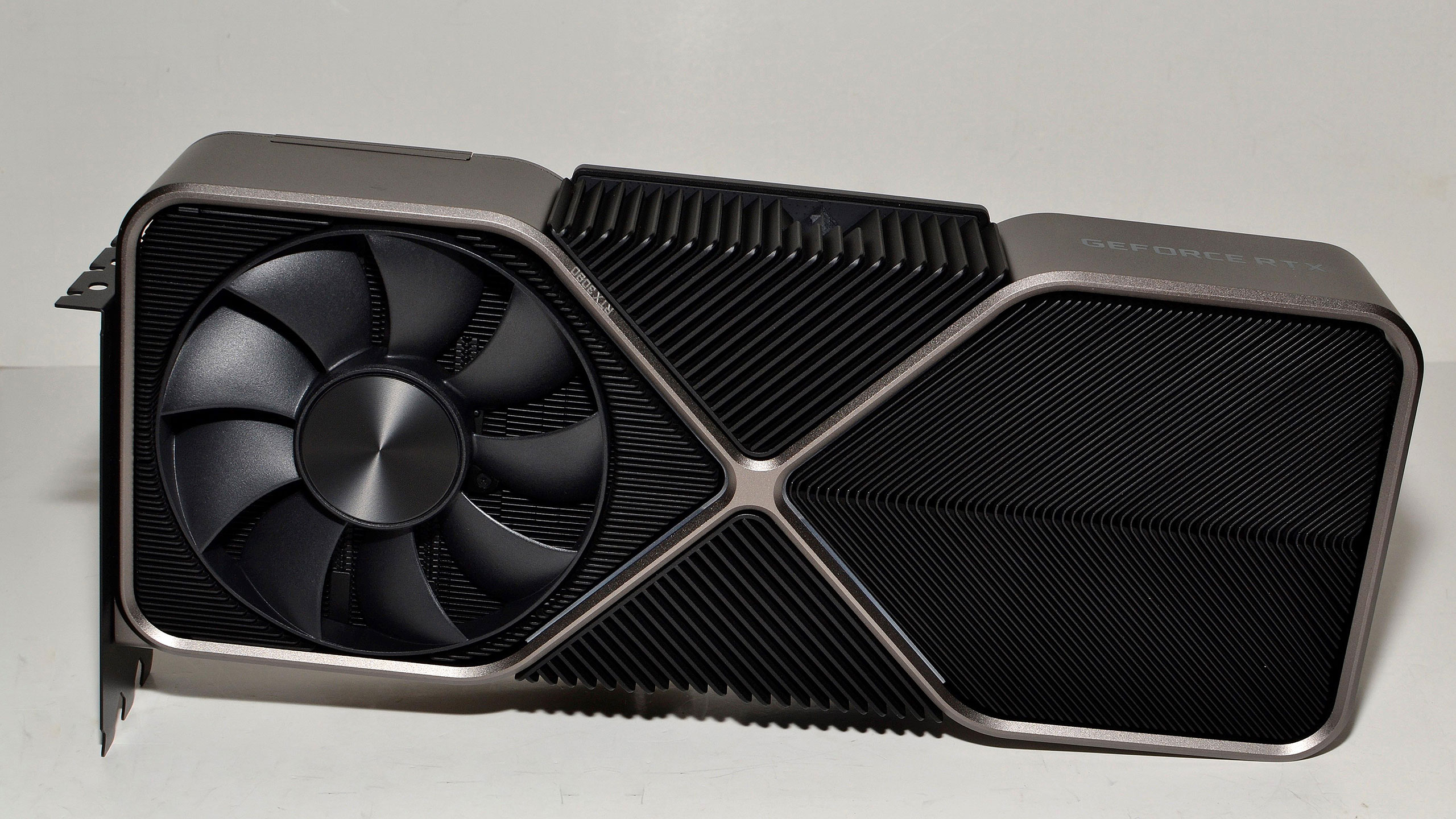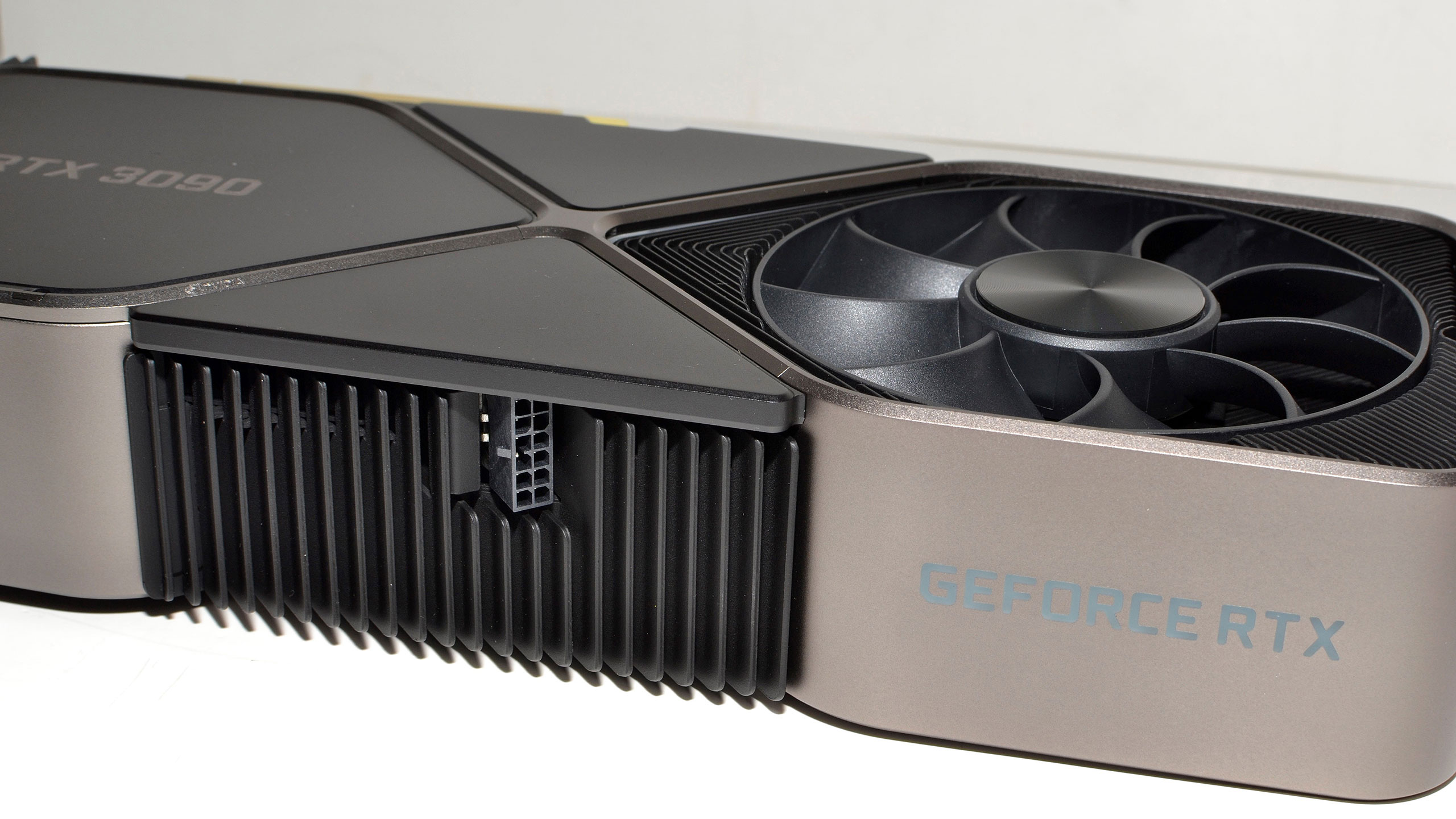Why you can trust Tom's Hardware
The GeForce RTX 3090 comes with the highest TGP we've ever seen: 350W. It also comes with the biggest heatsink I've personally seen, though Zotac's Amp! Extreme line is a close second. Let's see what the actual power, thermals, fan speeds, clocks speeds, and noise levels look like under Metro Exodus at 1440p ultra, and while running FurMark. We use Powenetics in-line power monitoring hardware and software to collect the real power use of the graphics card. You can read more about our approach to GPU power testing, with the main point being our methods are not reliant on drivers or software to gather the power data (though we do use software for the fan speeds, GPU core temperatures, and clock speeds).
How much power does the GeForce RTX 3090 Founders Edition use? Like the RTX 3080 FE, the 350W TGP rating ended up being a bit conservative. We hit 360W averages in both Metro Exodus and FurMark. Here's the full set of data, but it's also worth noting that noise levels on the RTX 3090 FE are basically minimal — the noise floor for our test PC (at a distance of 15cm) is 43 dB, and under load we saw a maximum of 48.9 dB — just a hair lower than the Asus GeForce RTX 3080 TUF Gaming. It's also slightly quieter than the RTX 3080 FE's 49.7 dB. From above the desk, the load vs. idle noise levels aren't really noticeable and run into the limits of our test environment (which most definitely is not an anechoic chamber, sorry).
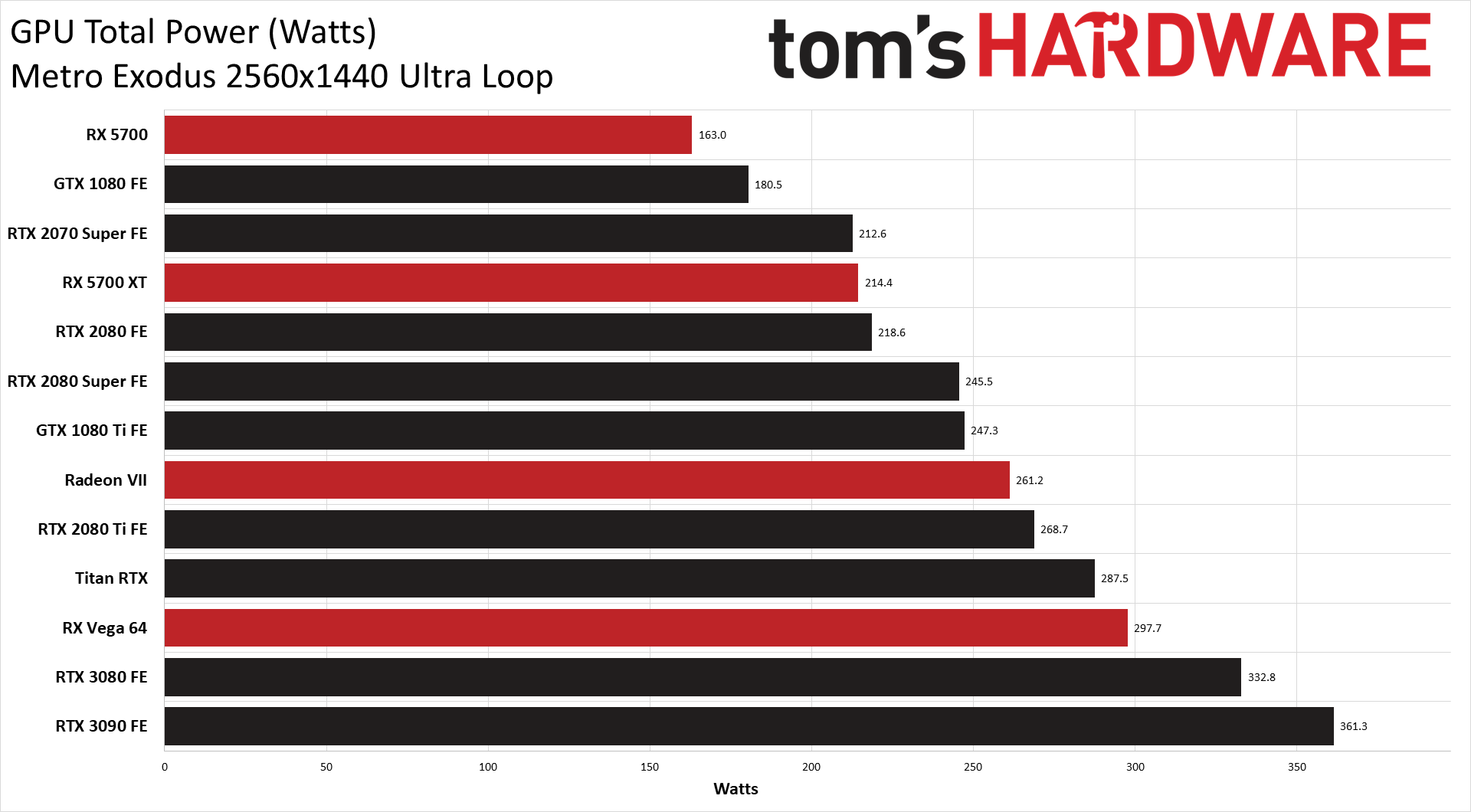
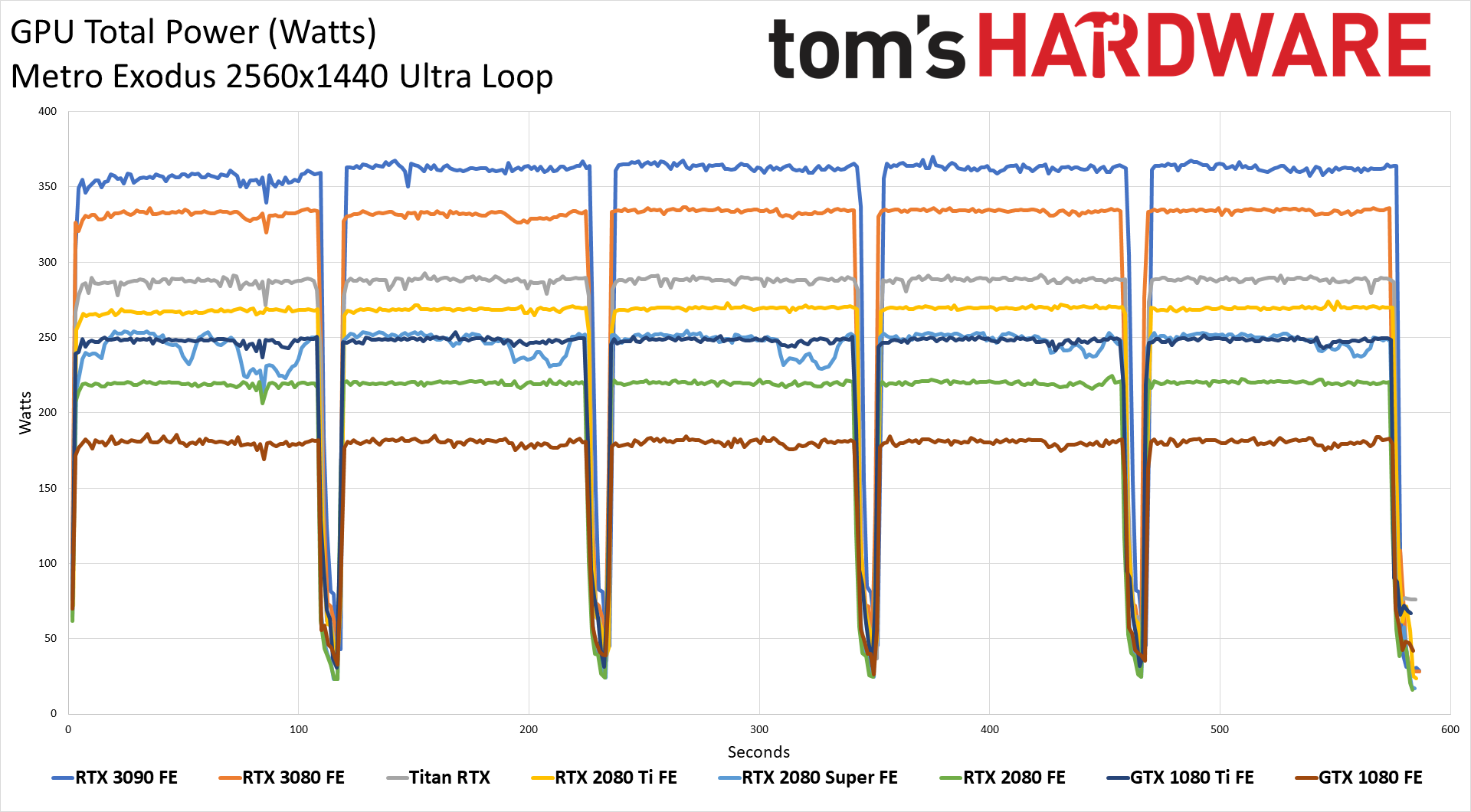
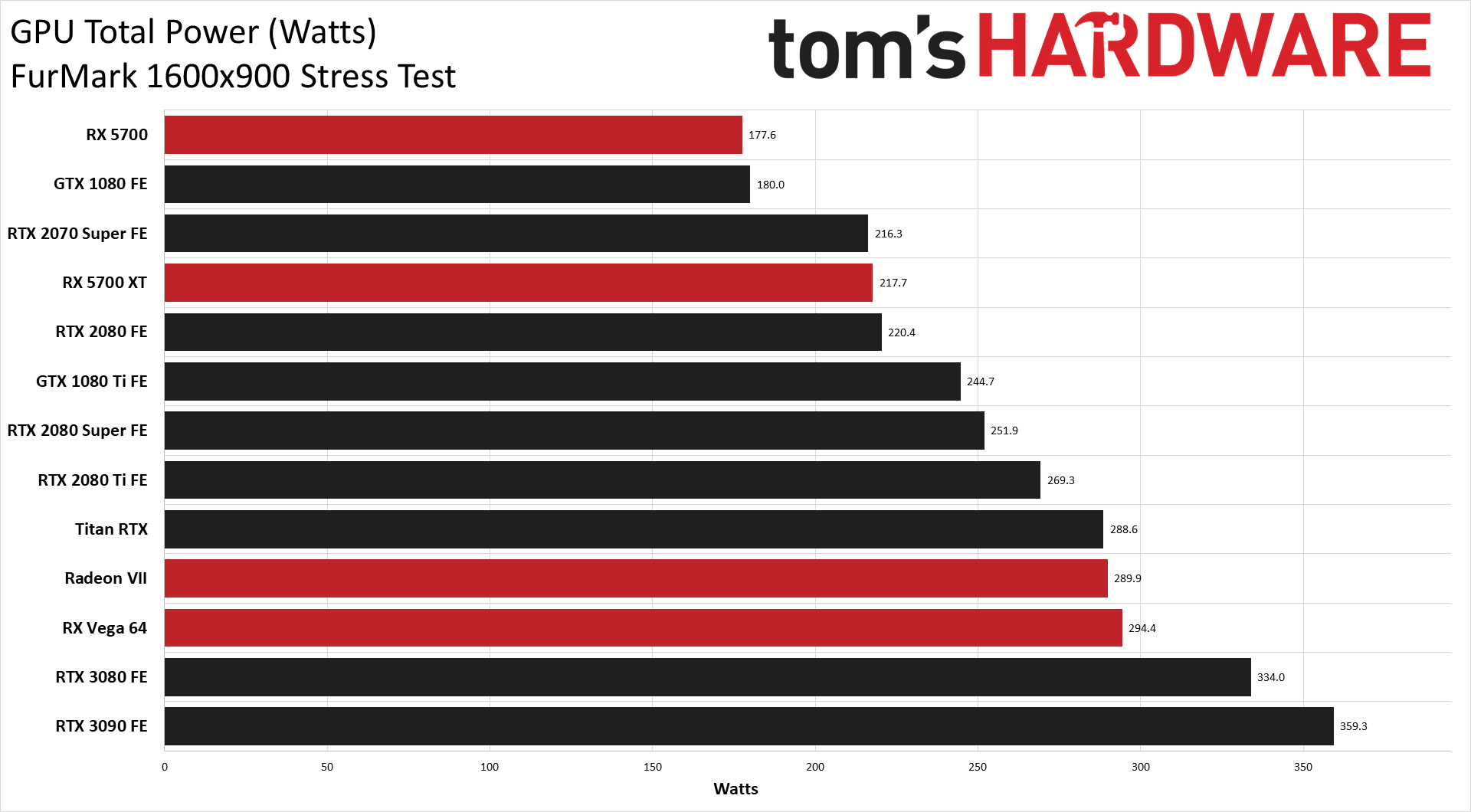
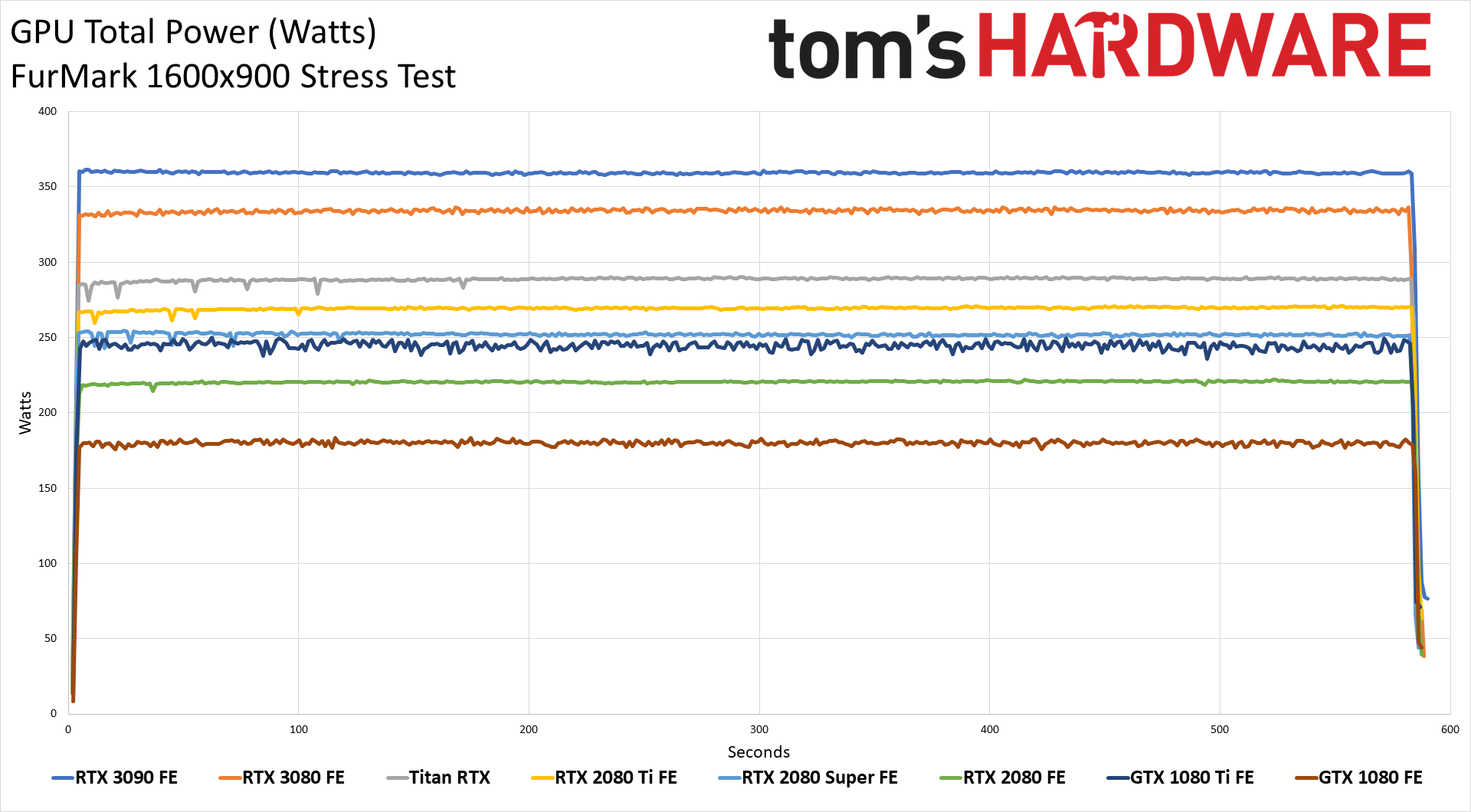
Temperatures, fan speeds, clock speeds, and noise are all interrelated and affected by power consumption. Of course, a larger heatsink and fans can cool better than a smaller heatsink, and the 3090 puts its size to good use, allowing it to consume more power than the 3080 FE without getting hotter — in fact, it runs a bit cooler.
We'll have an FLIR thermal video later that shows a timelapse 20 minute video of the RTX 3090 FE launching and running Metro Exodus and then exiting back to the desktop, but the exterior of the card tops out at around 55C, which is a far cry from the scorching backplates of the faster 20-series Founders Edition cards.
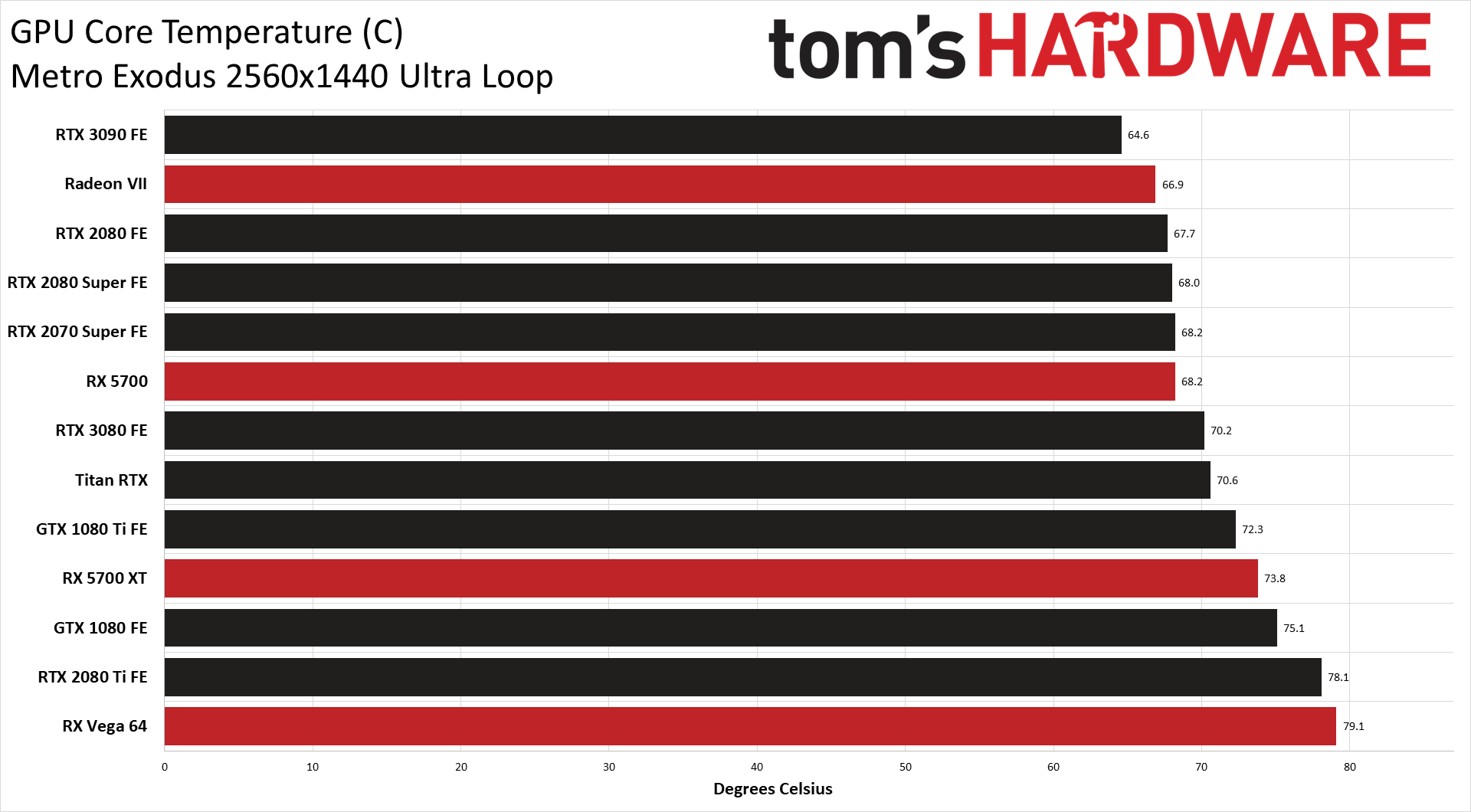
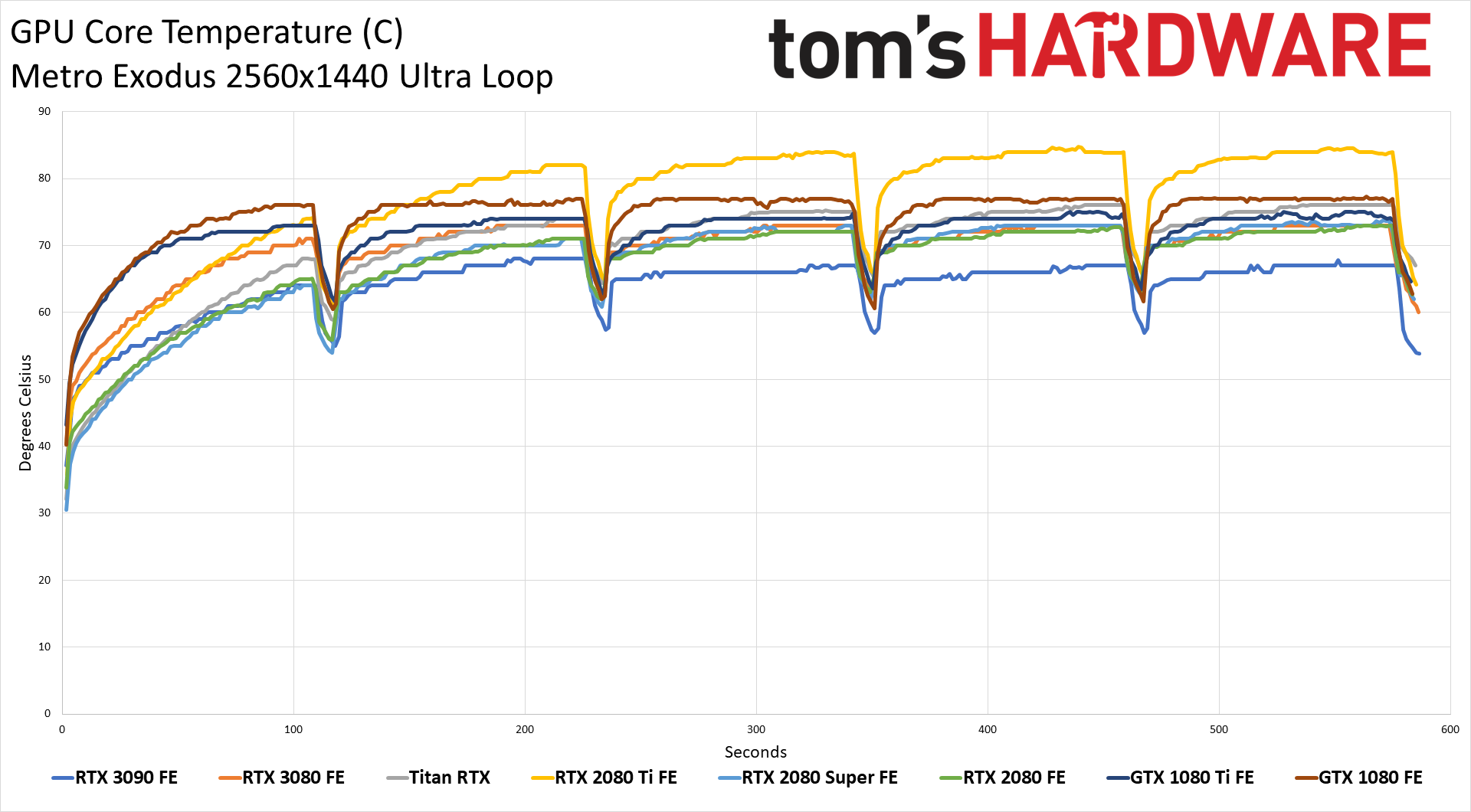
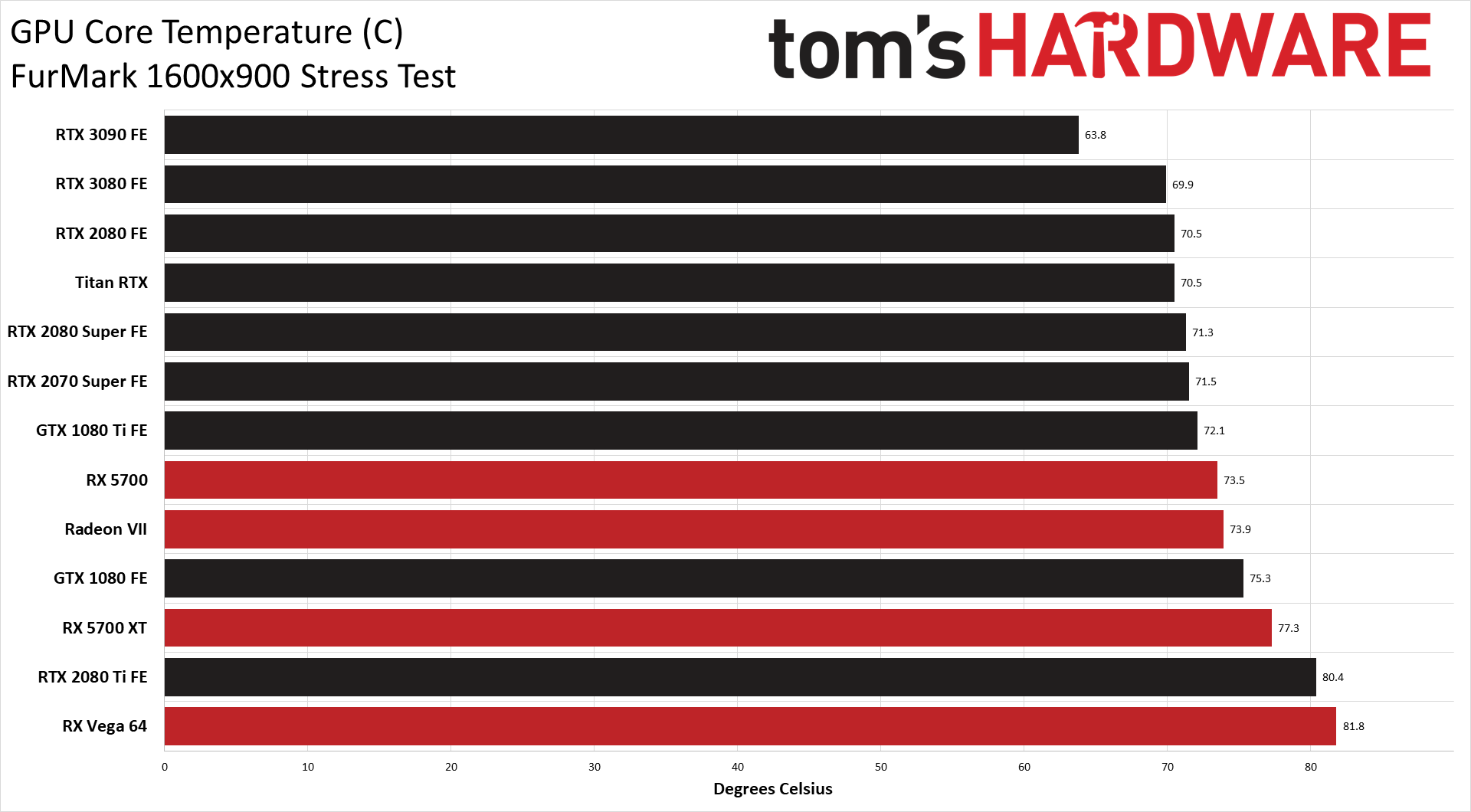
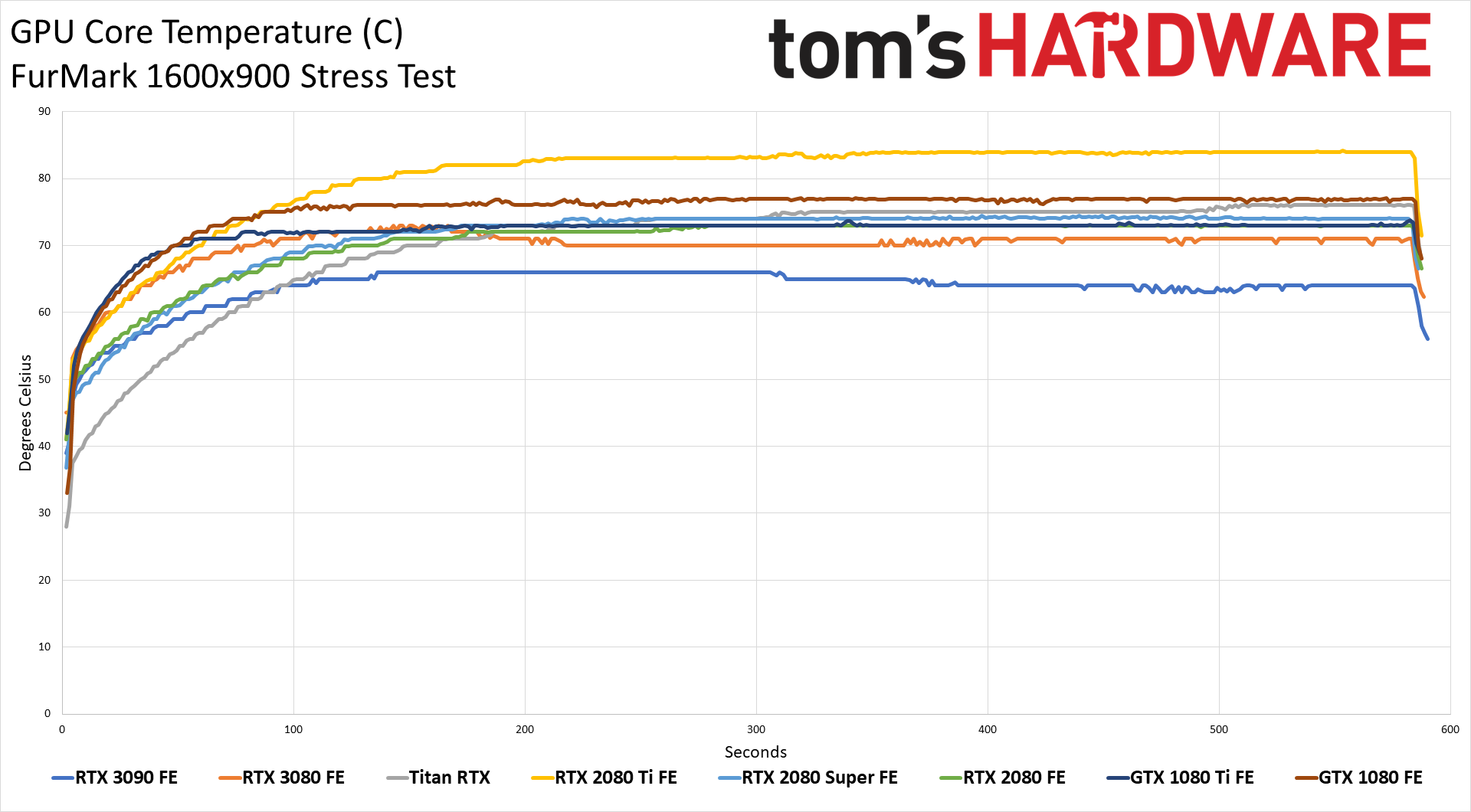
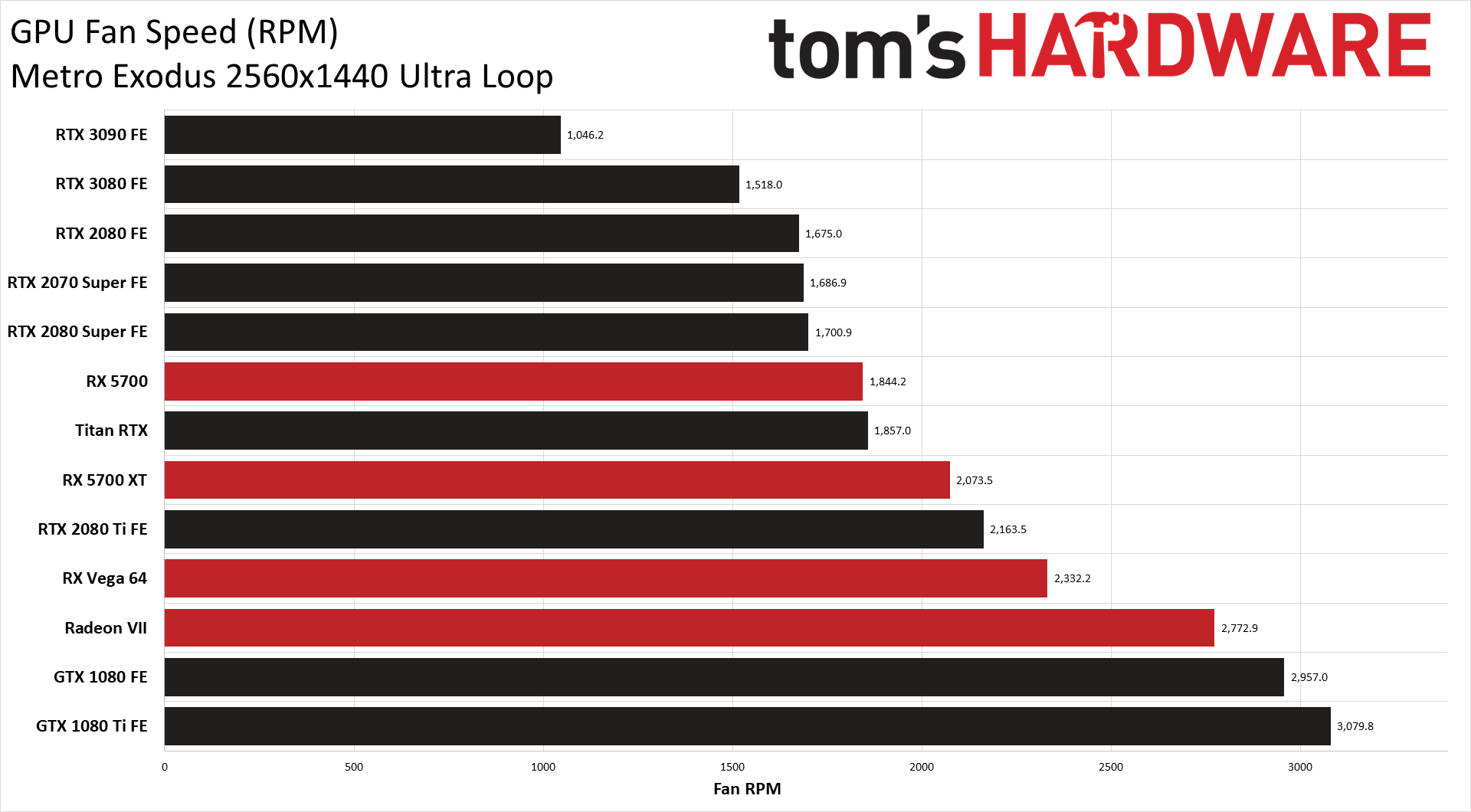
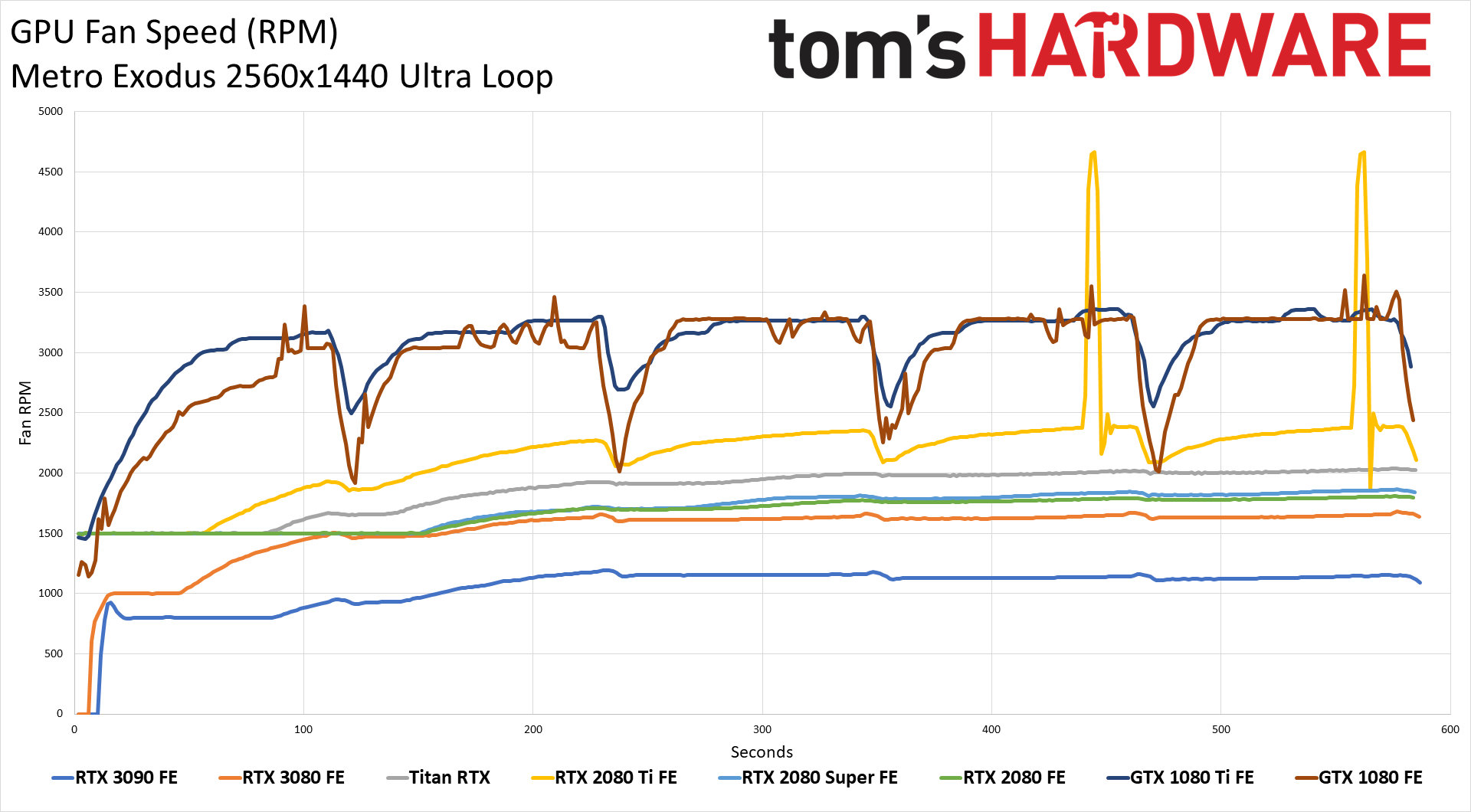
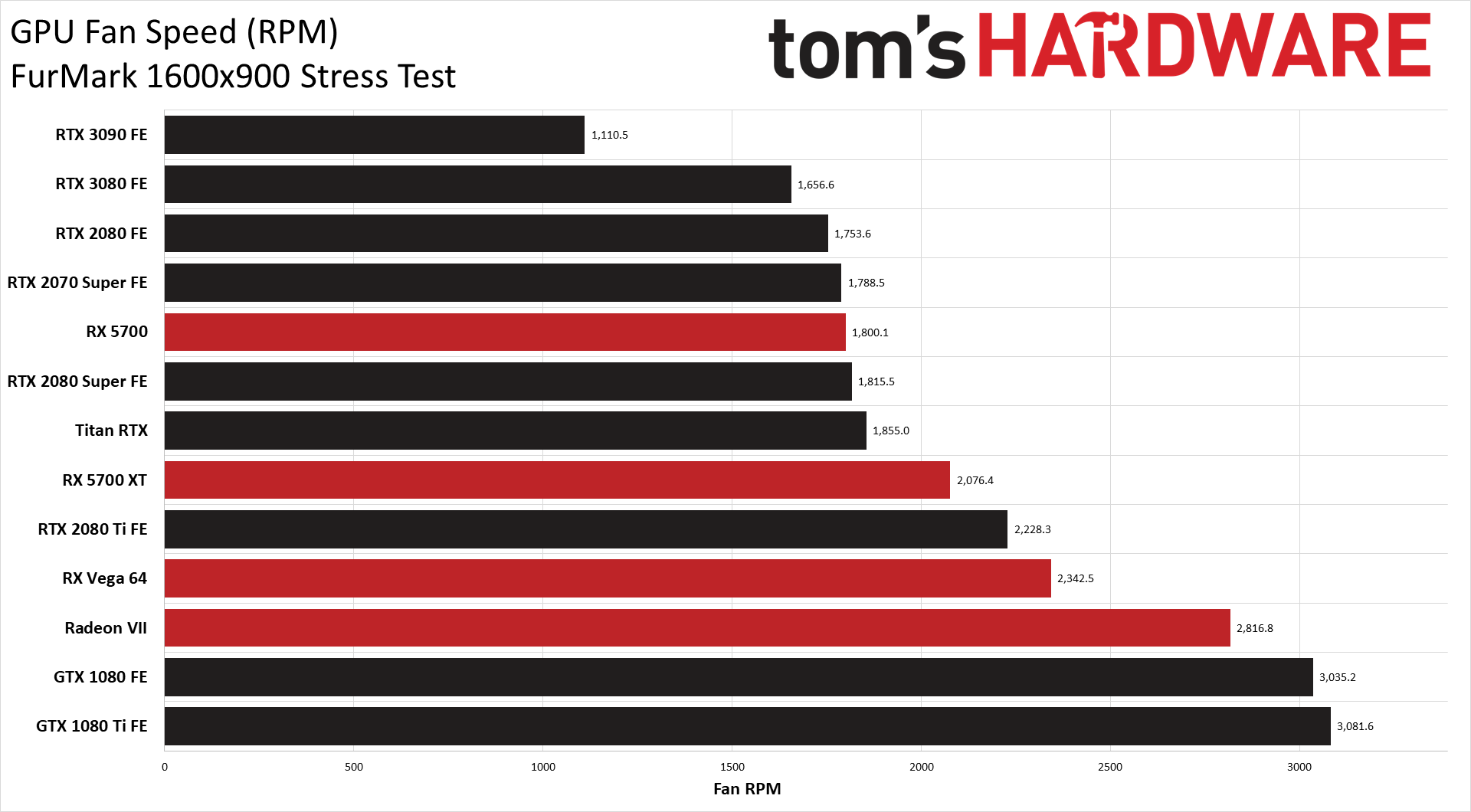
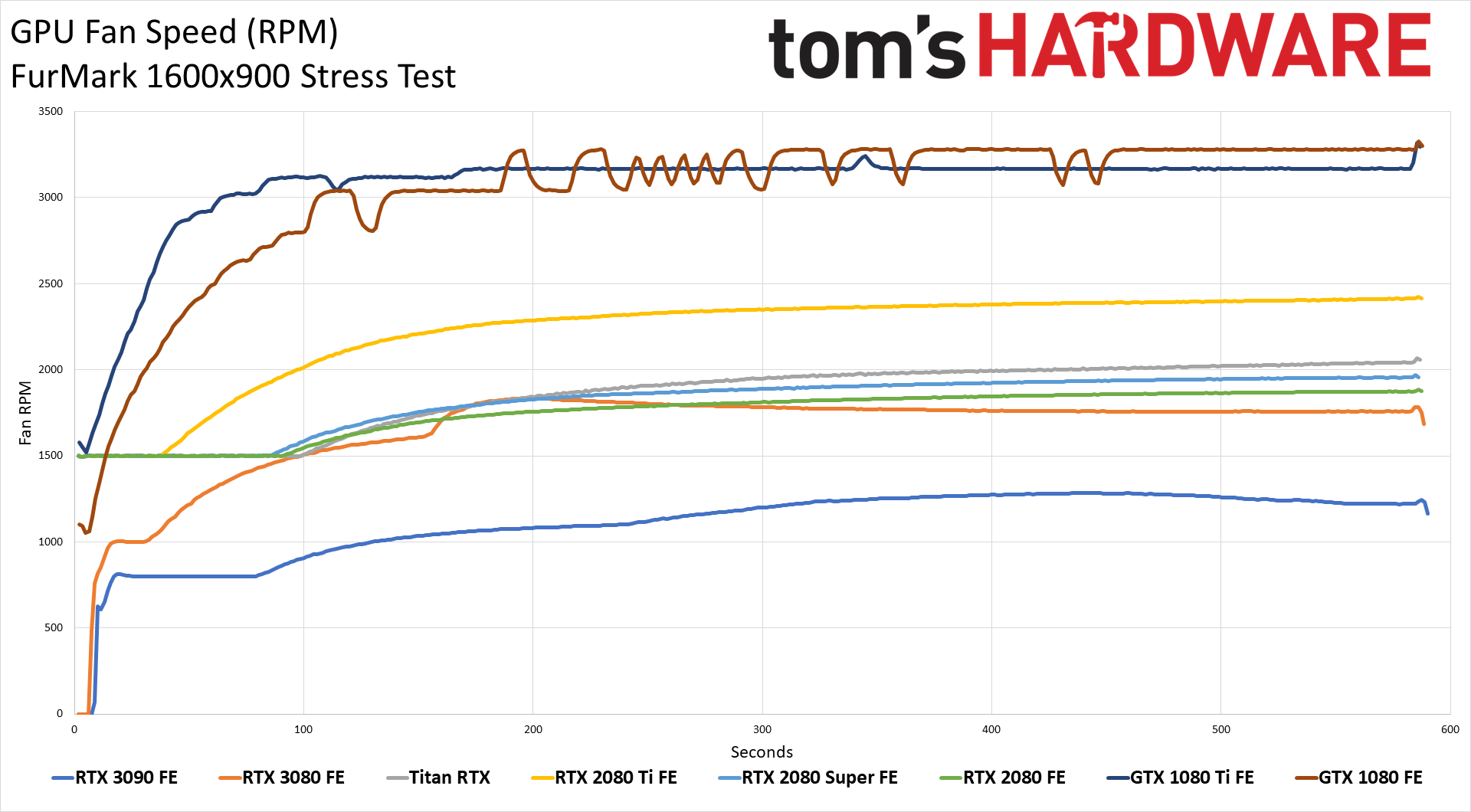
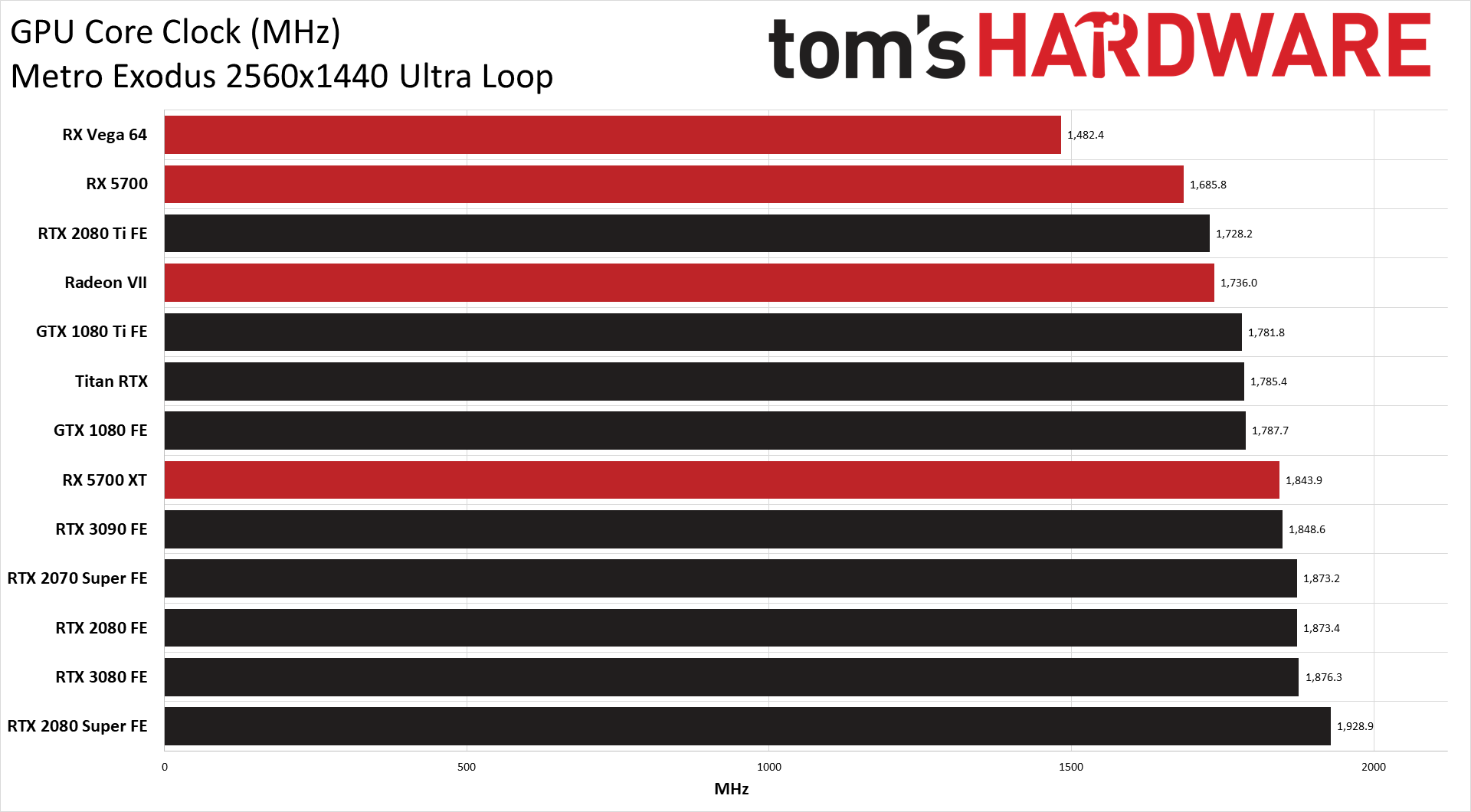
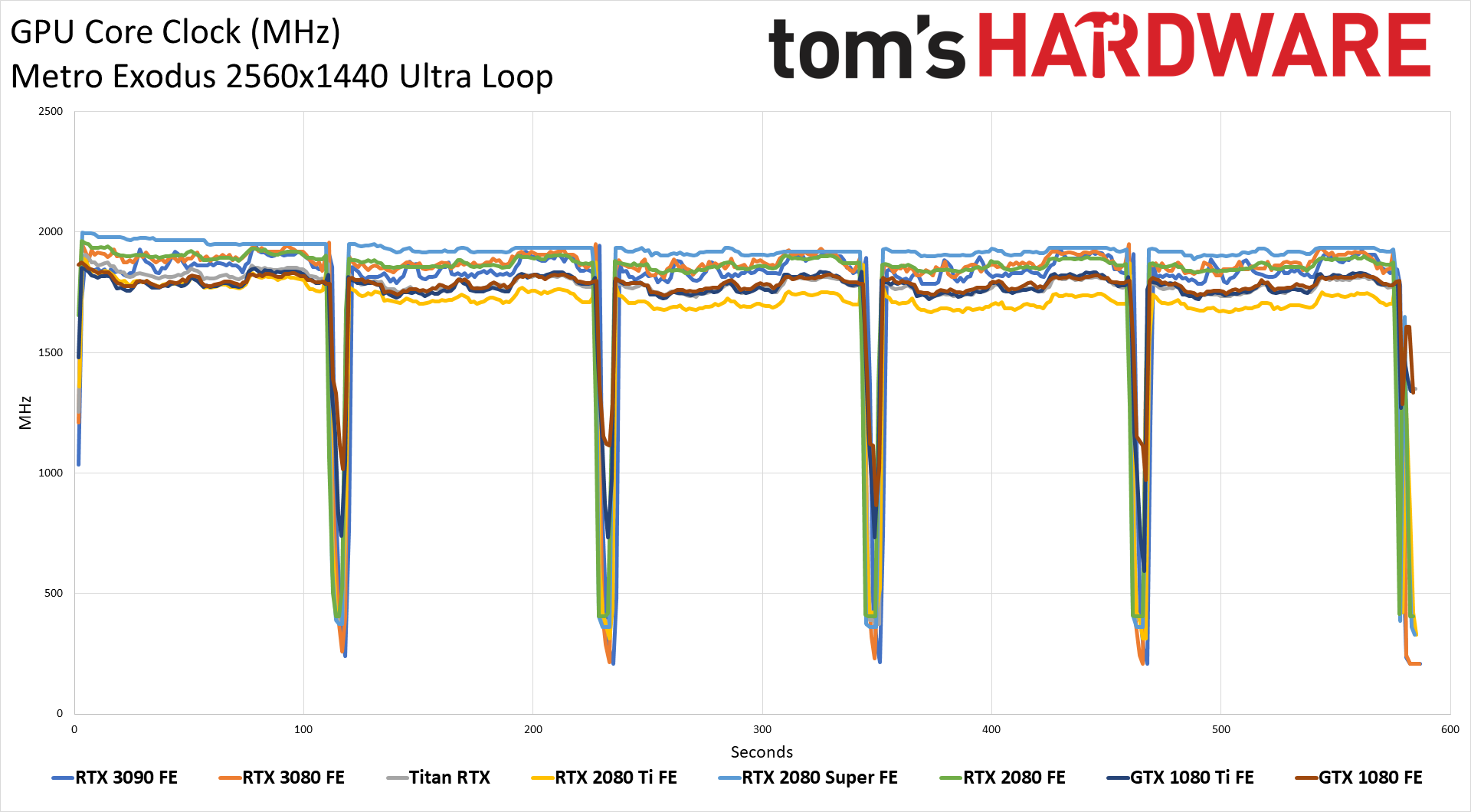
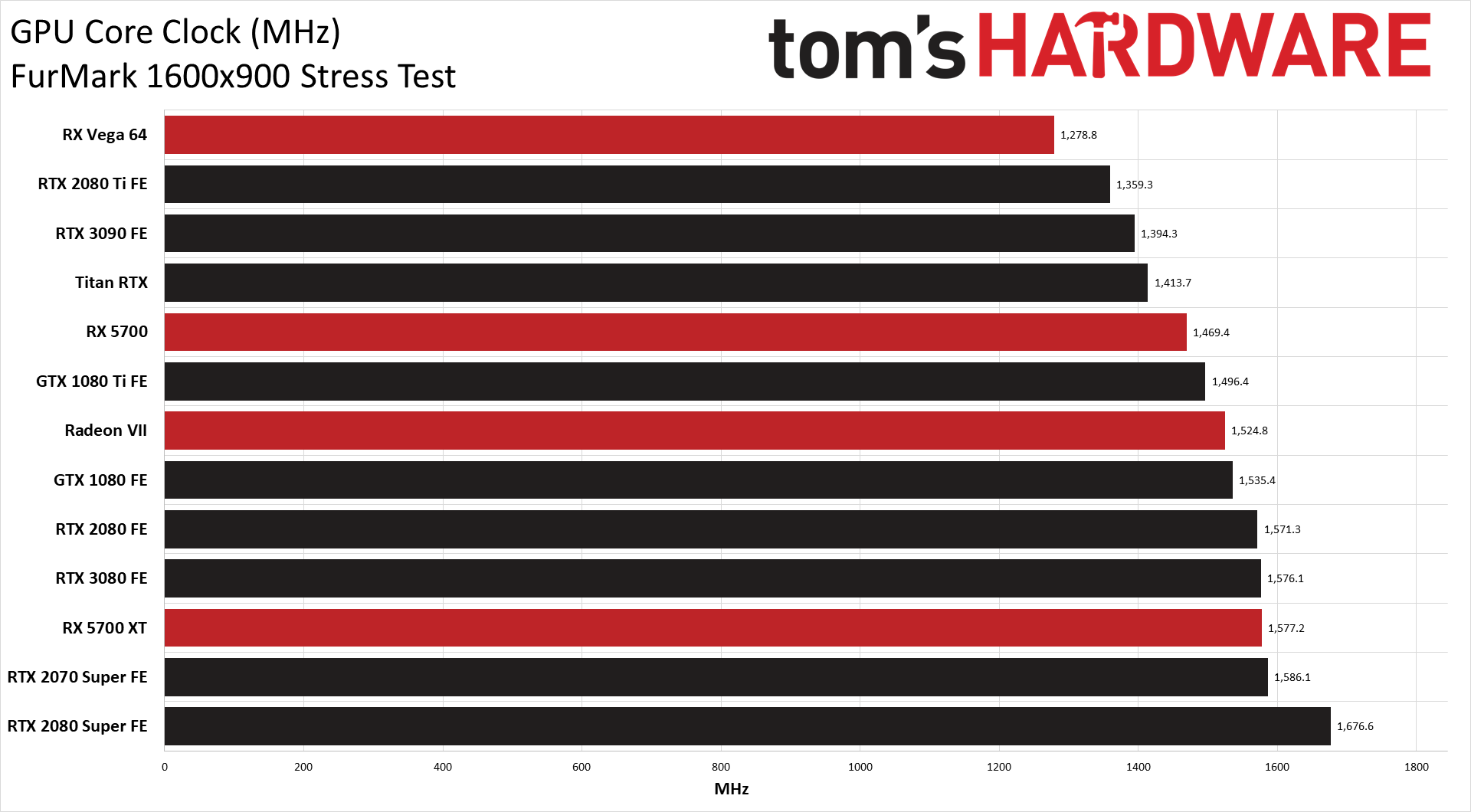
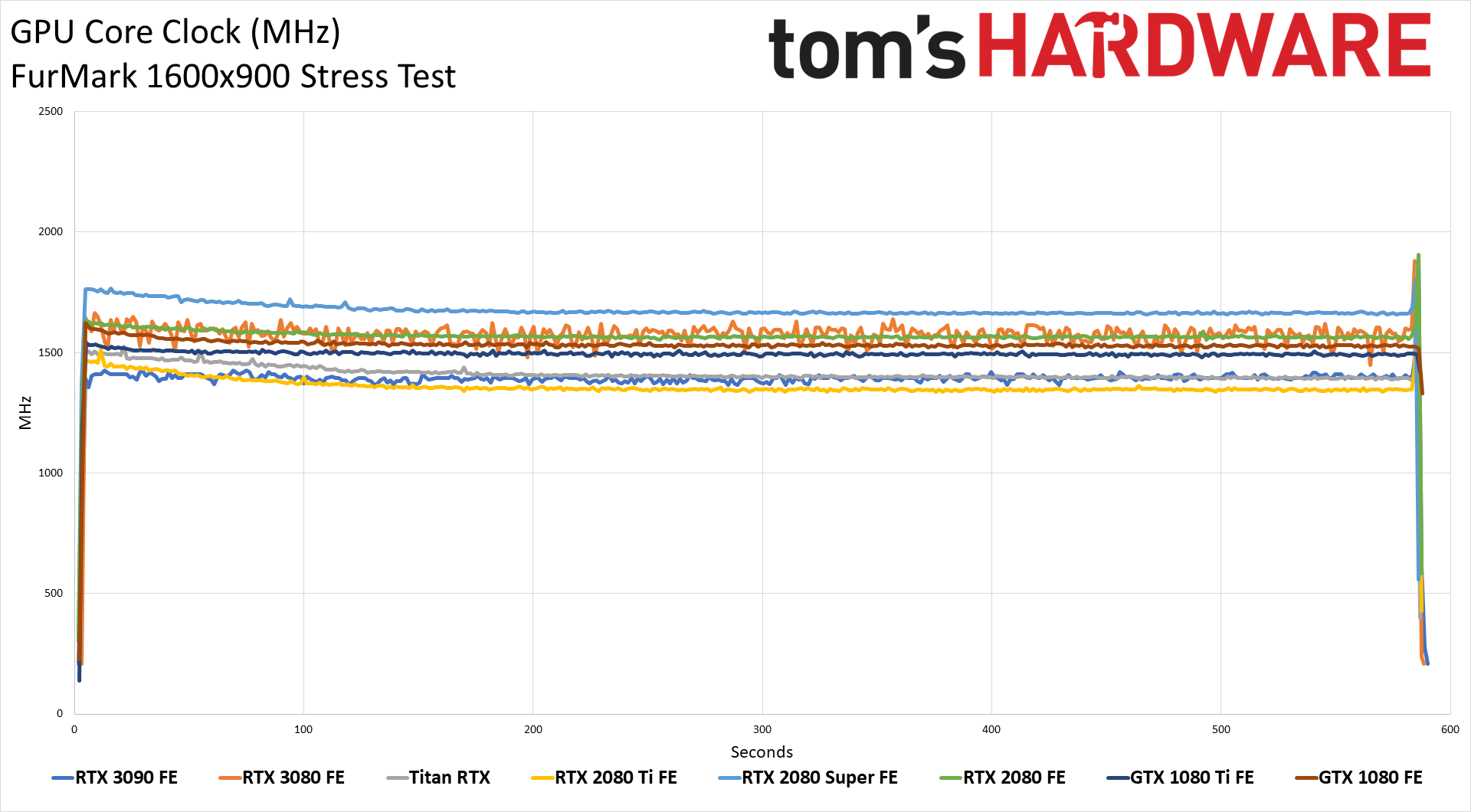
Overall, the RTX 3090 FE does great when it comes to cooling performance and noise levels. The RTX 3080 FE does pretty well, but we've already seen a couple of AIB cards deliver superior temperatures and noise levels. The RTX 3090 FE basically matches the Asus and MSI 3080 cards and tops out at a not-particularly-worrisome 65C, with the fans spinning at just 1100 RPM. We know other 3090 cards have equally massive triple-slot designs, and some of them may end up beating the 3090 FE, but there's little cause for concern.
The large size of the RTX 3090 FE does present some problems, however. While we wouldn't recommend using dual 3090 cards for SLI and gaming, multi-GPU solutions aren't as uncommon with proviz workstations and AI research. The difficulty would be figuring out how to cram more than two RTX 3090 FE cards into most cases. Liquid cooling or other options would be required, so we'll certainly be interested in seeing what Nvidia does with its Ampere Quadro cards.
Get Tom's Hardware's best news and in-depth reviews, straight to your inbox.
Current page: GeForce RTX 3090: Power, Temperatures, Fan Speed, Clocks, and Noise
Prev Page GeForce RTX 3090: Pro-Viz Benchmarks and Compute Next Page GeForce RTX 3090: The New King of the Graphics Card Hill
Jarred Walton is a senior editor at Tom's Hardware focusing on everything GPU. He has been working as a tech journalist since 2004, writing for AnandTech, Maximum PC, and PC Gamer. From the first S3 Virge '3D decelerators' to today's GPUs, Jarred keeps up with all the latest graphics trends and is the one to ask about game performance.
-
VforV "Titan-class card" - again with this nvidia BS?Reply
It's not, it's a catchphrase from nvidia and the media keeps playing this tune. It's only a more expensive 3080 Ti, which will be proven soon. A halo product for people with more money than sense.
"Fastest current graphics card, period" - Wrong, it's not, it's based on the game and if it's optimized for nvidia (DLSS) or AMD (and no DLSS). In the first case it wins in the latter one it gets beaten by RX 6800 XT and RX 6900 XT, sometimes by a mile... as much as it beats them in the first case with DLSS ON, but then AMD does it by raw power. So it's 50/50, period.
"8K DLSS potential" - yeah, sure "potential". If you count dreaming of 8k gaming potential too, then yes. Again nvidia BS propagated by media still.
"Needs a 4K display, maybe even 8K" - no it does not "need" an 8k display unless you want to be majorly disappointed and play at 30 fps only. That is today, with today games and today's graphics demands, but tomorrow and next gen games you can kiss it goodbye at 8k. Another nvidia BS, again supported by the media.
GJ @ author, nvidia is pleased by your article. -
Loadedaxe Titan Class card? No offense, but to Nvidia it is. The rest of the world its a 3080Ti.Reply -
HideOut Mmmm 2 months late for a review? Whats happened to this company. Late or missing reviews. Nothing but rasberry Pi stuff, and sister publication anantech is nearly dead.Reply -
Blacksad999 Reply
Yeah, the Raspberry Pi stuff is getting annoying. They brought out their 5800x review way after the fact, too. Kind of odd. I understand it's a difficult year to review things, but months later than most review sites isn't a good look when that's supposed to be the sites specialty.HideOut said:Mmmm 2 months late for a review? Whats happened to this company. Late or missing reviews. Nothing but rasberry Pi stuff, and sister publication anantech is nearly dead.
